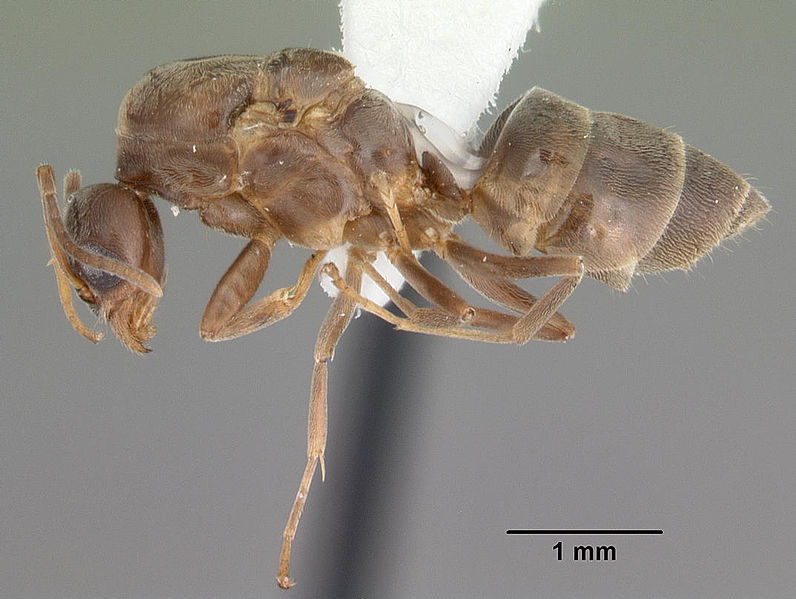SERVICE REQUEST?
Fill out the form below.
Find our nearest location
Your Local Office

Argentine Ant
Attribution: April Nobile / © AntWeb.org / CC-BY-SA-3.0
Size:
Workers of this species are about 1/8-inch in length.
Color:
Varies from dark brown to black, and the body is often shiny in appearance.
Behavior:
The colonies of Argentine ants can grow quite large and contain tens of thousands of workers and numerous queens. Each colony will be divided into subcolonies located in various suitable harborages connected by established trunk trails. These subcolonies will number from a few hundred to thousands of individuals. Since members of two separate colonies are not aggressive toward each other, colonies will often combine with one another. This creates huge super-colonies that may extend over several properties. Argentine ants are very aggressive and will drive out native species of ants, creating an environment where they are literally the “king” of the anthill, so to speak. Their primary food source during the warm months is the sweet honeydew produced by aphids and mealybugs. The presence of fruit trees, roses and other plants that attract aphids often contributes to Argentine ant infestations.
Argentine ants reside outdoors, usually in shallow nests in the soil beneath a stone, board or any other item that provides protection. Small, medium or large subcolonies will locate themselves in piles of lumber, bricks or debris; in landscape mulch; behind brick and stone veneer; within and under insulation; and in wall voids or any other suitable void. Argentine ants are the most common invaders of homes in Southern California. This ant is also very common in homes throughout most of the Gulf Coast states.
The Argentine ant can be nearly impossible to control, especially during midsummer in areas such as Southern California. At best, regular treatments keep as few ants as possible from entering the home or business. General tips for limiting ant infestations include:
- Eliminating piles of lumber, bricks or other debris that could serve as a nesting site for ants.
- Keeping landscape mulch less than 2 inches thick and at least 12 inches away from foundations.
- Ensuring the sprinkler system does not spray directly onto the foundation.
- Sealing as many cracks in the building’s exterior as possible.
- Keeping tree and shrub branches trimmed to prevent touching the home.
- Considering re-landscaping to avoid using plants that are prone to aphids and similar insects. At the very least, treat such plants for aphids regularly. A tree/shrub company, such as TruGreen, can be helpful with this task.
Family Name:
Linepithema humile
Read What Our Clients
Are Saying
My Terminix tech Scott is the best! He is professional, courteous and absolutely thorough about his job. Thank you for sending such a blessed tech to my house. Hamlet, NC
This letter is to say how pleased we are here at Morreene West Apartments with your services. We are very pleased with the technician, Christopher. He does a great job. Durham, NC
Terminix has consistently offered our apartment complex reliable, competent service. We are completely satisfied with their knowledgeable representative who is always punctual and does a superior job for us every time. Chapel Hill, NC
I would like to take the time to thank you for giving us such great service here at Carver Pond Apartments. Your Pest Technician Christopher Mitchell has provided us with excellent service over the last few months. Christopher is such a great help to us in providing helpful information so that we can better serve our residents here at Carver Pond. Durham, NC
SERVICE REQUEST?
Fill out the form below.